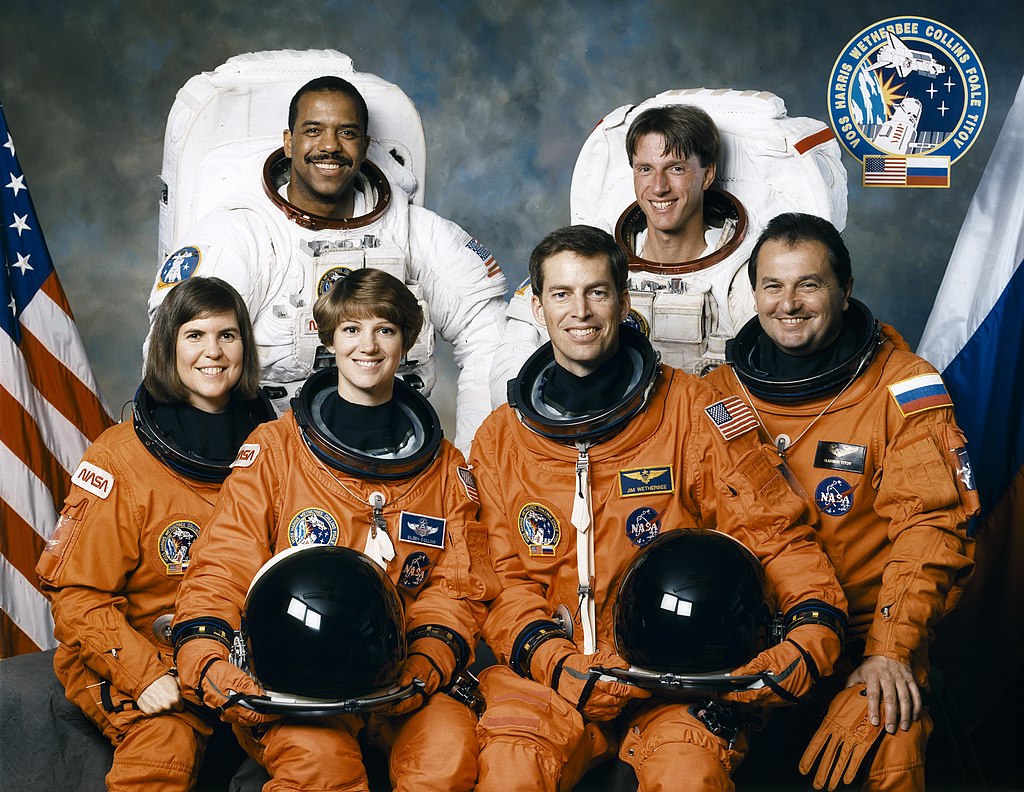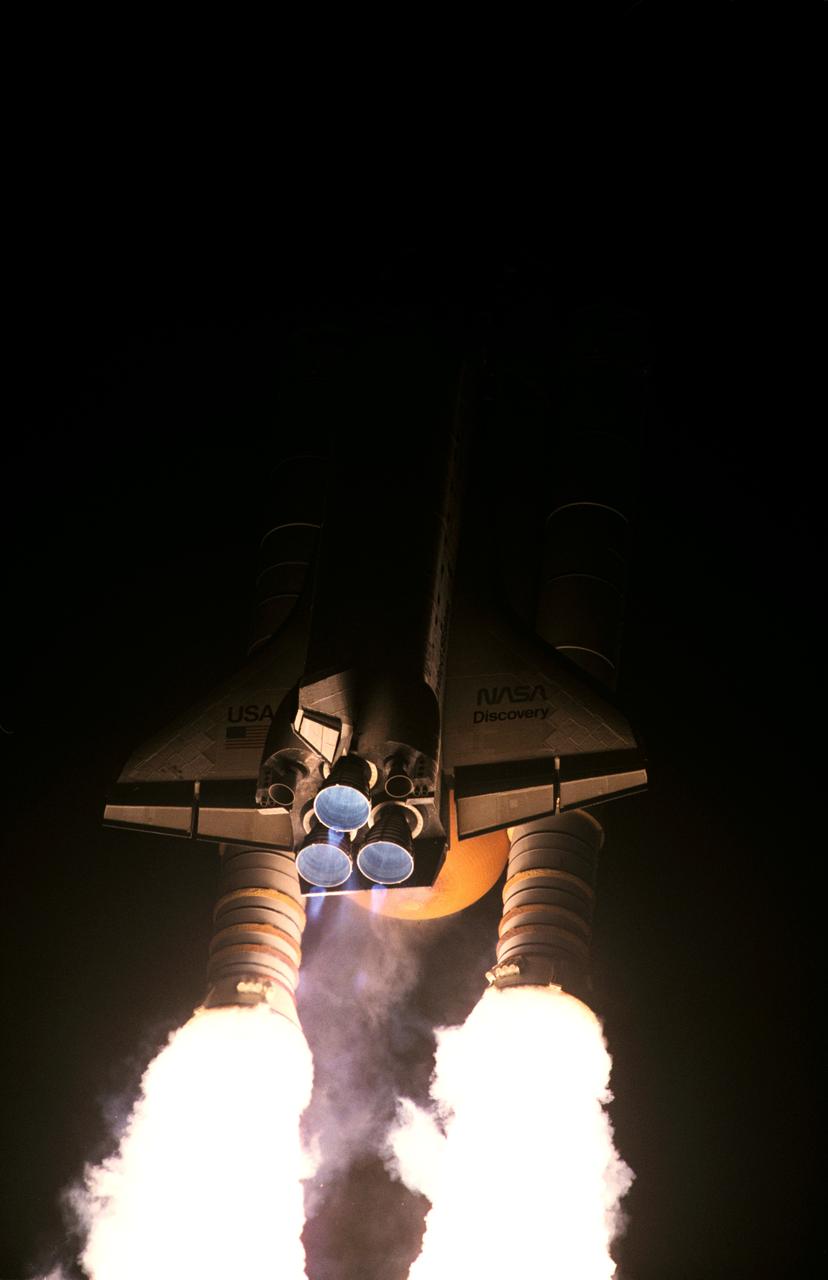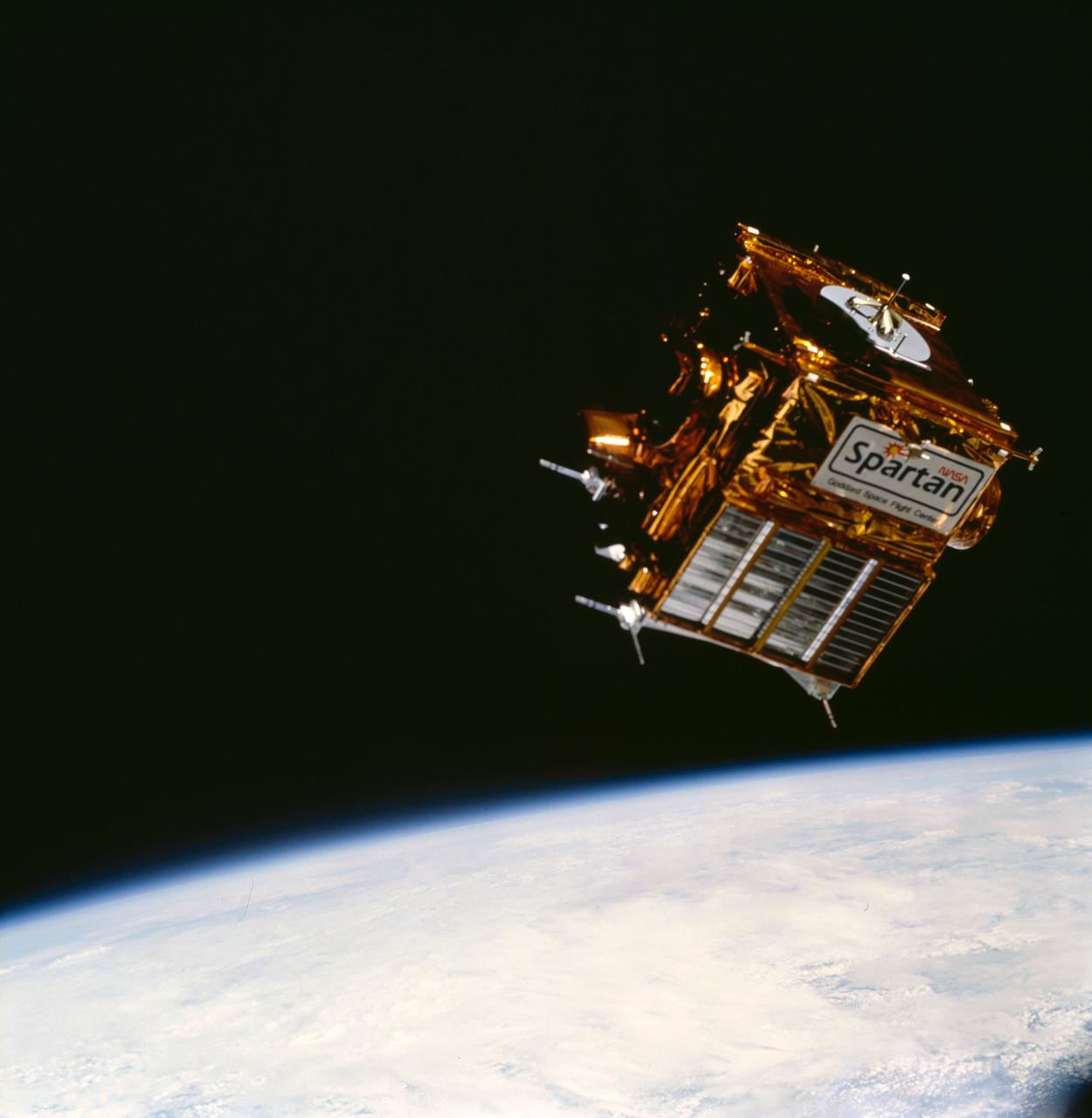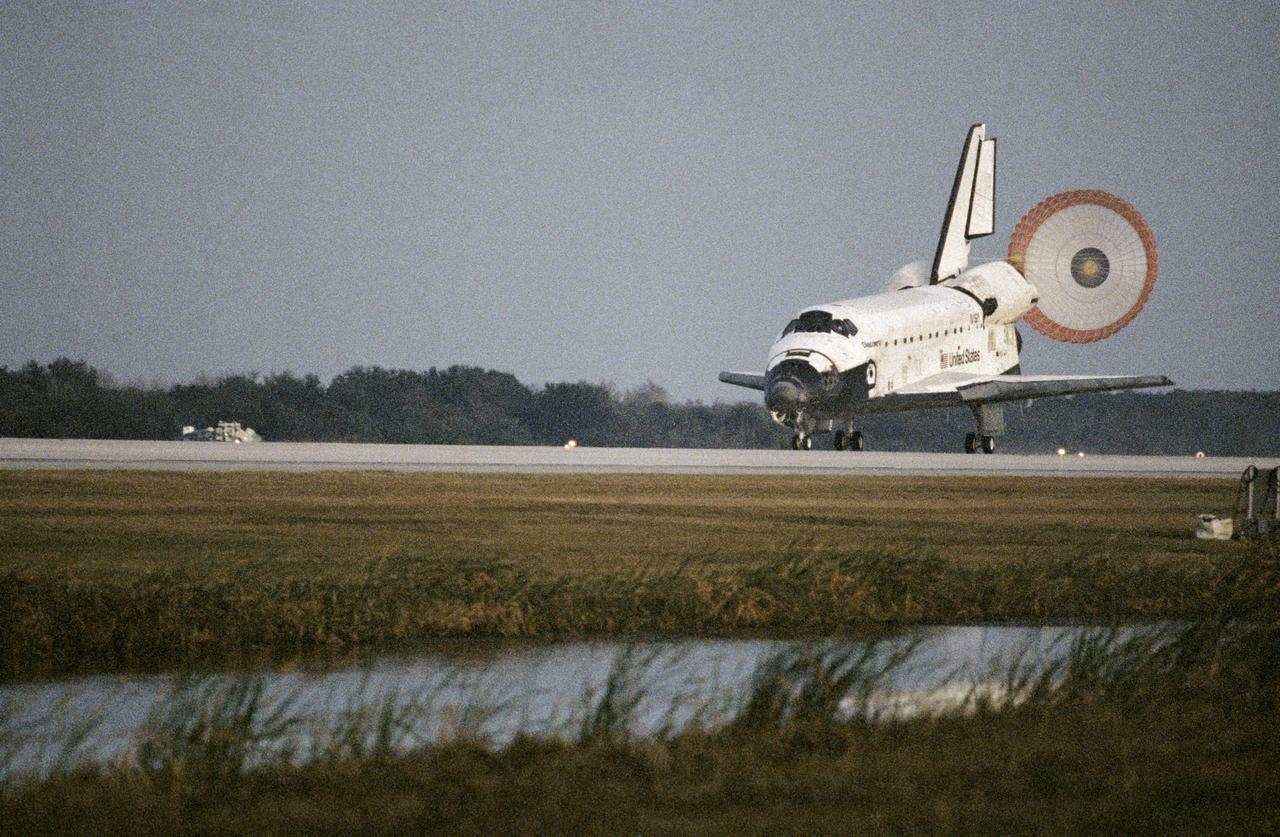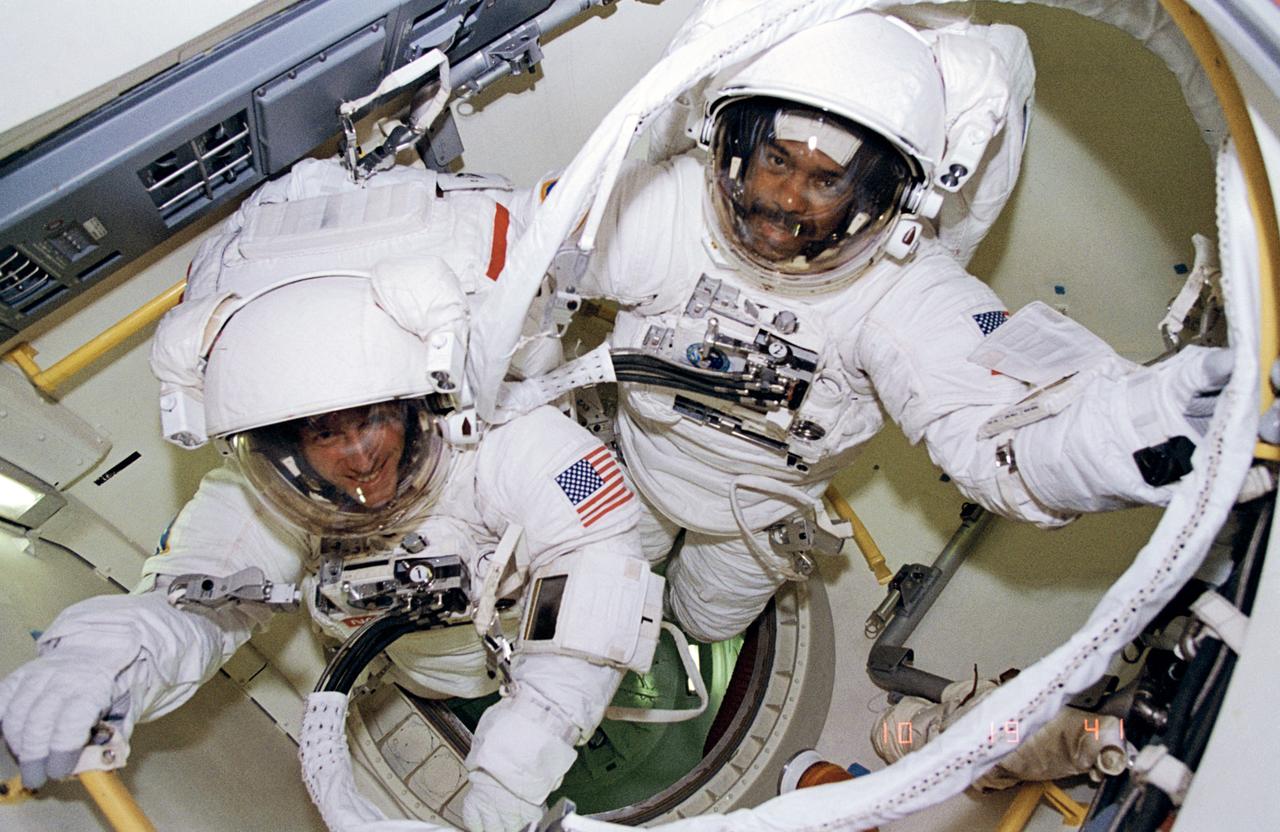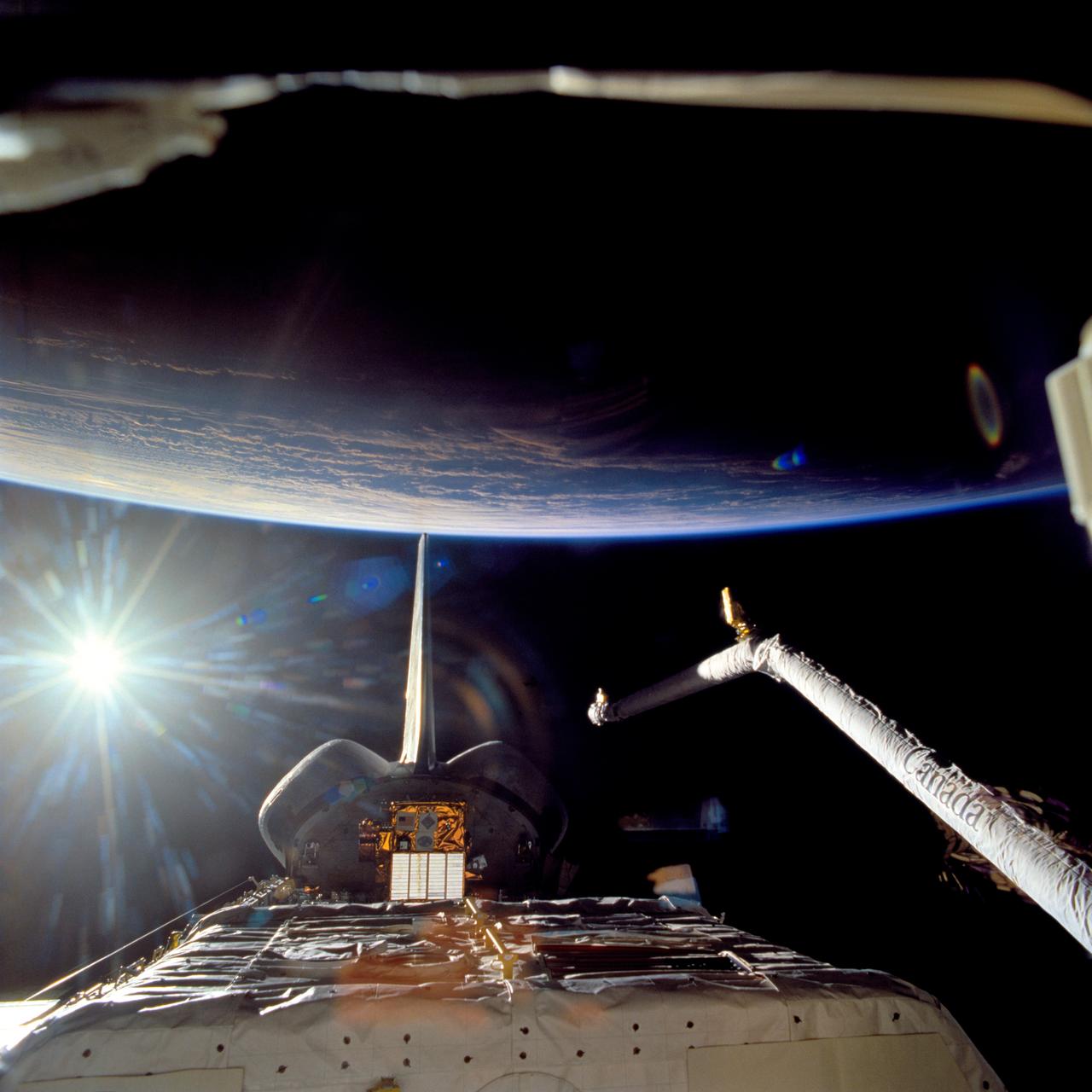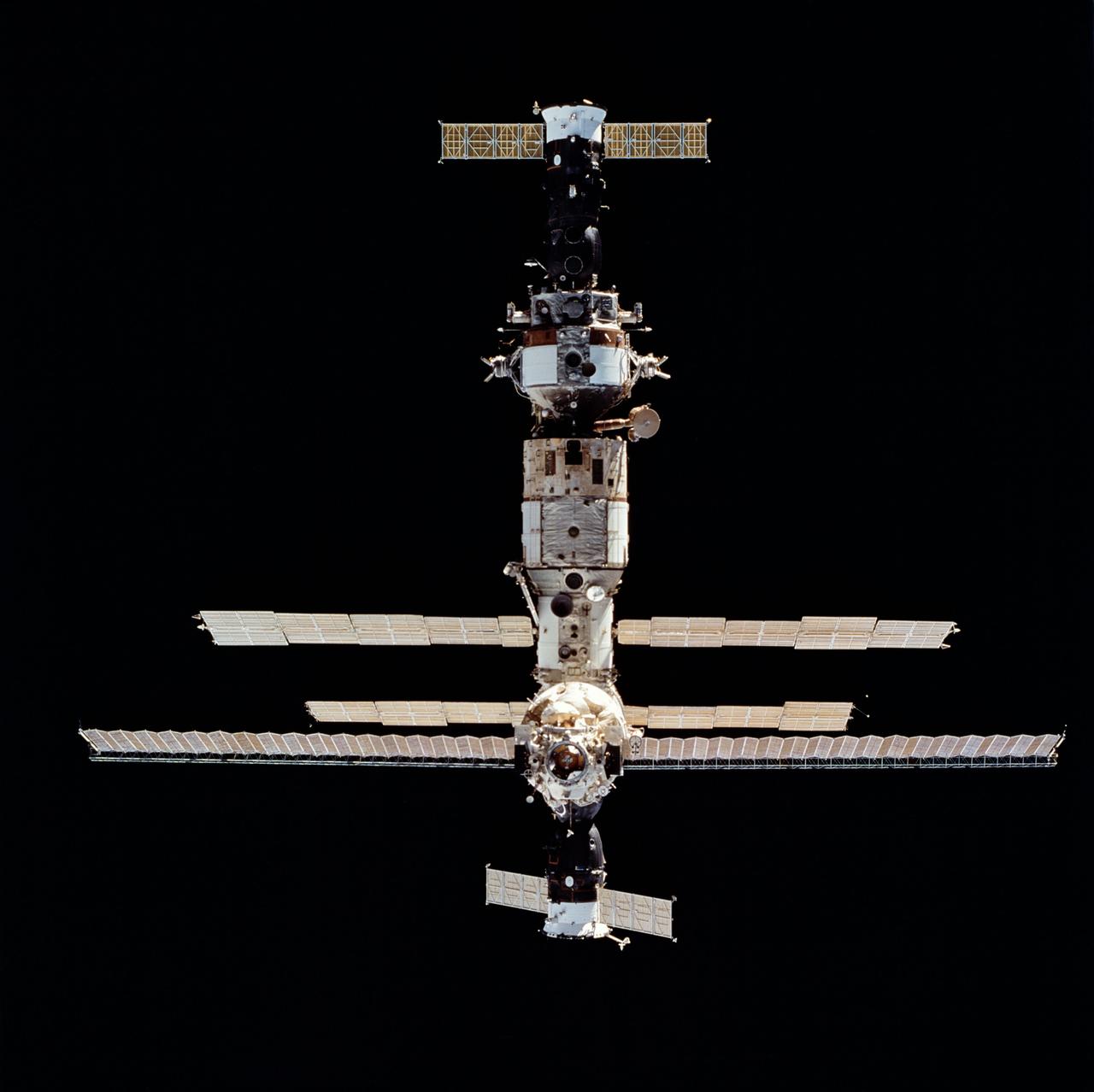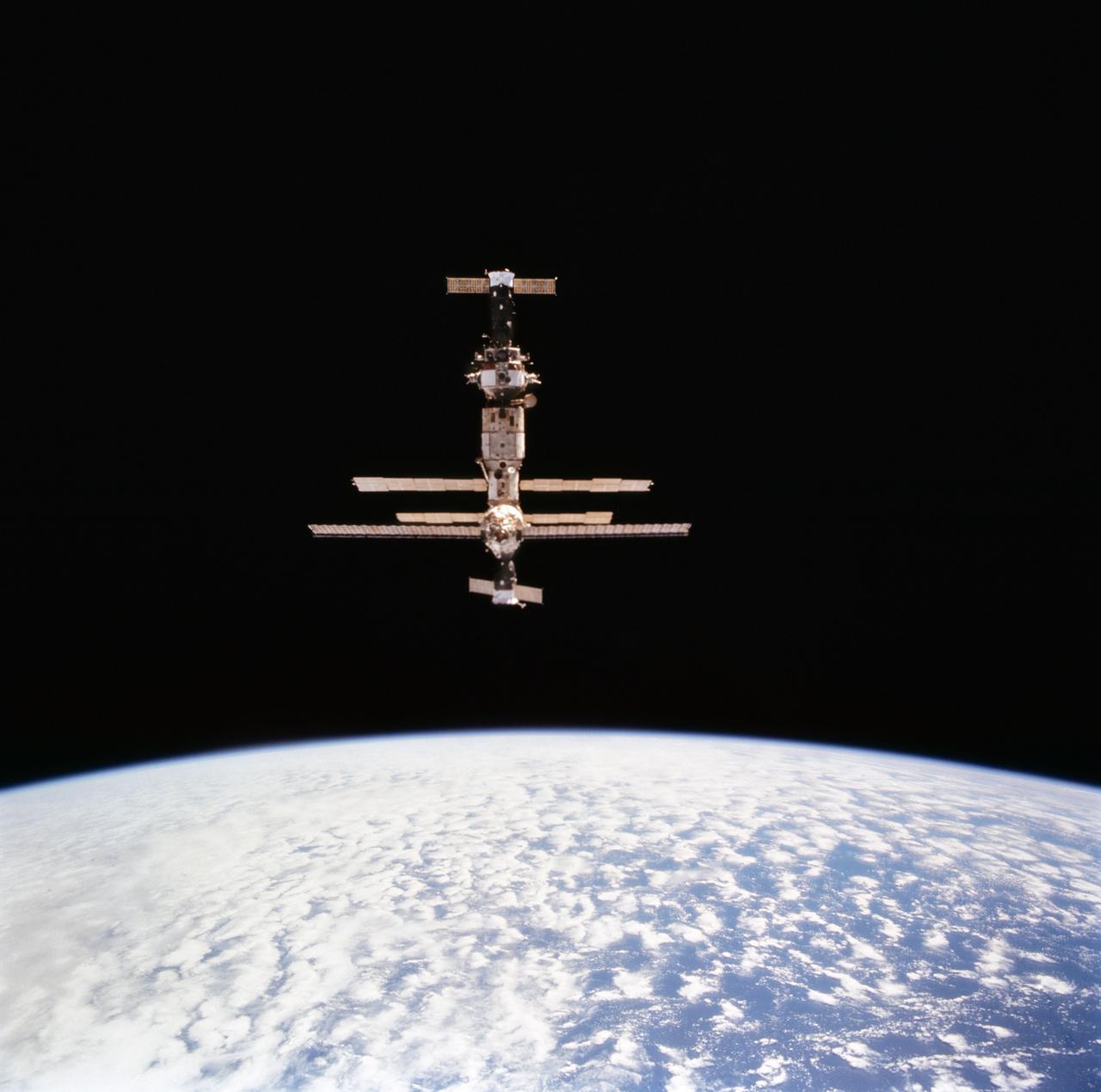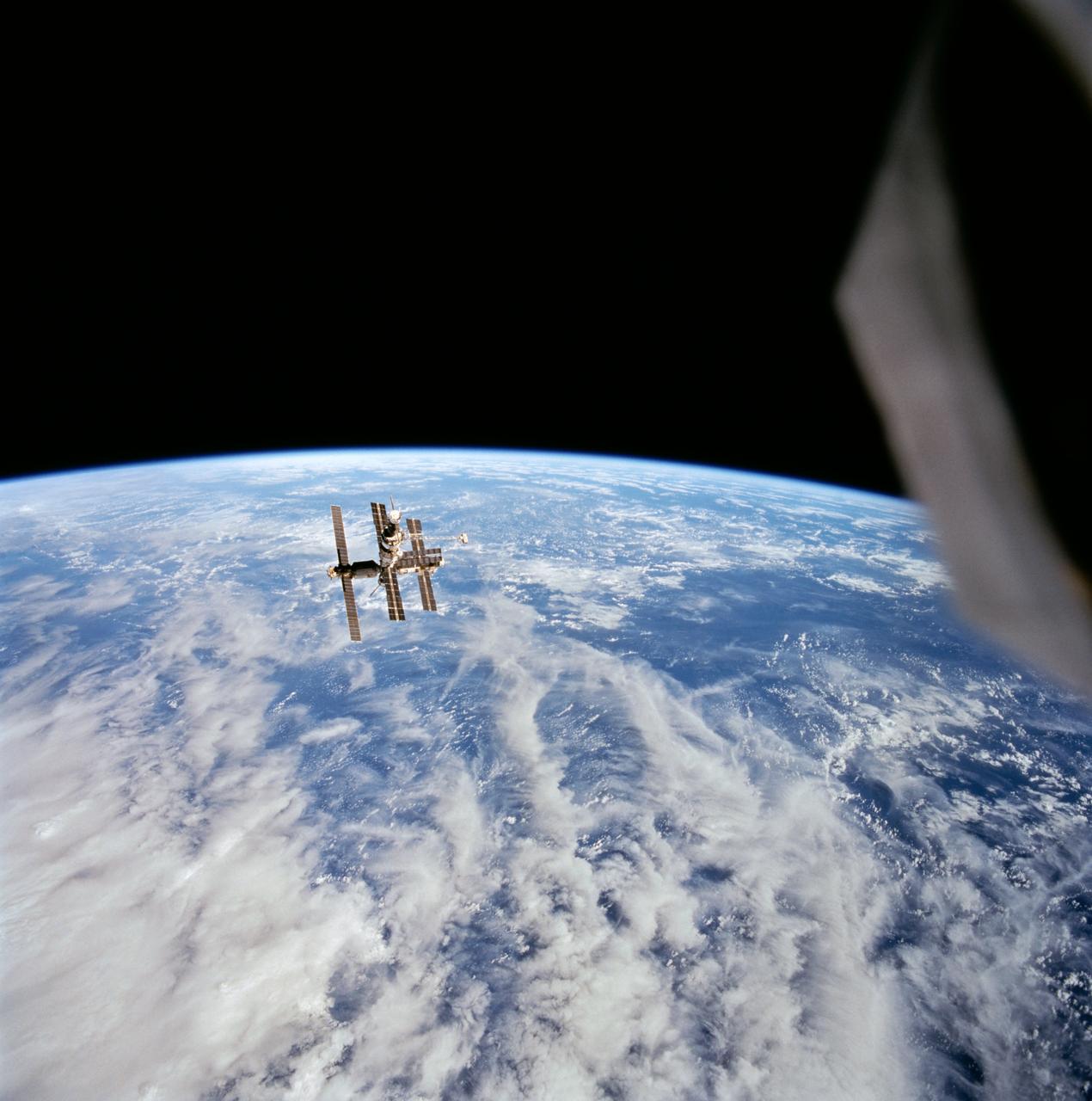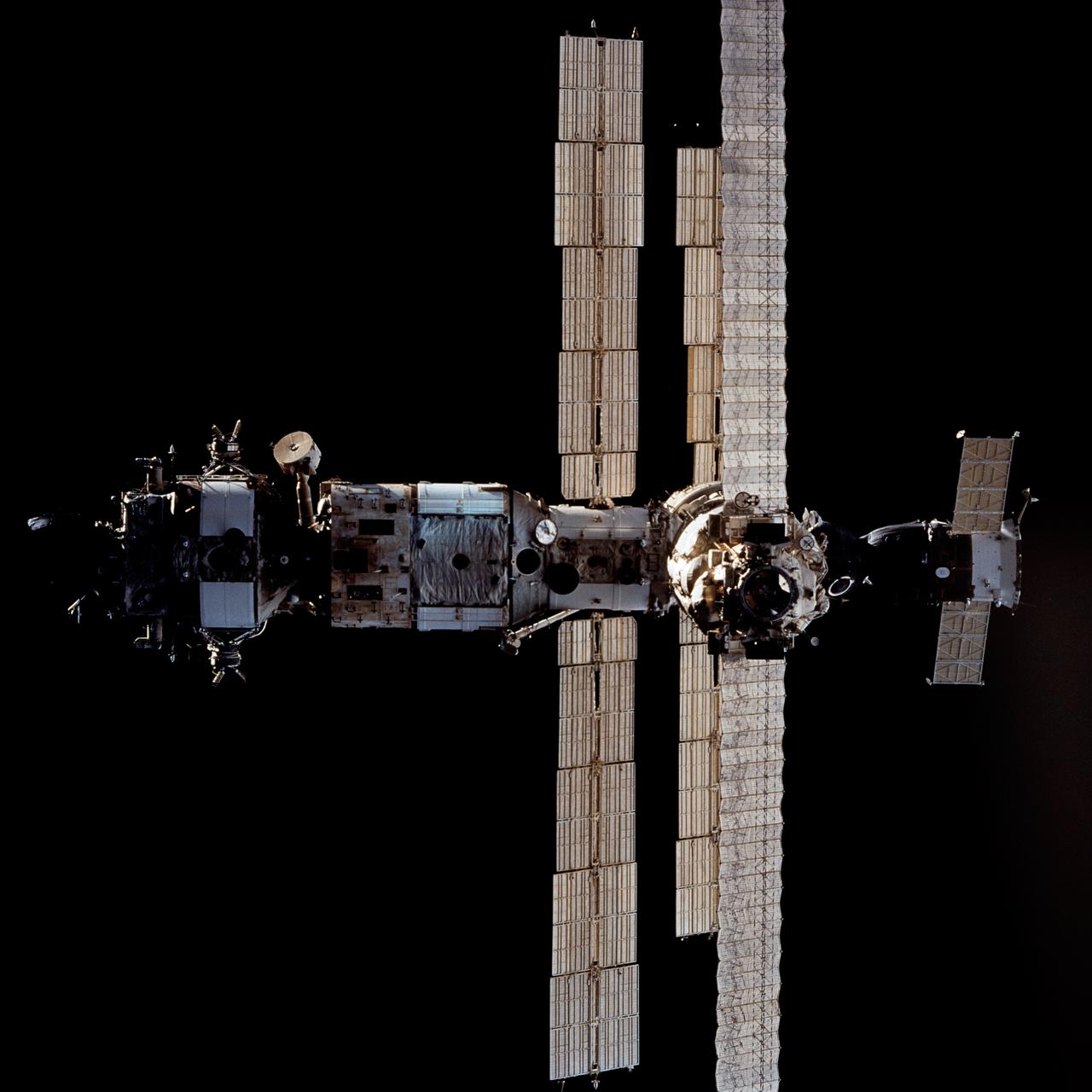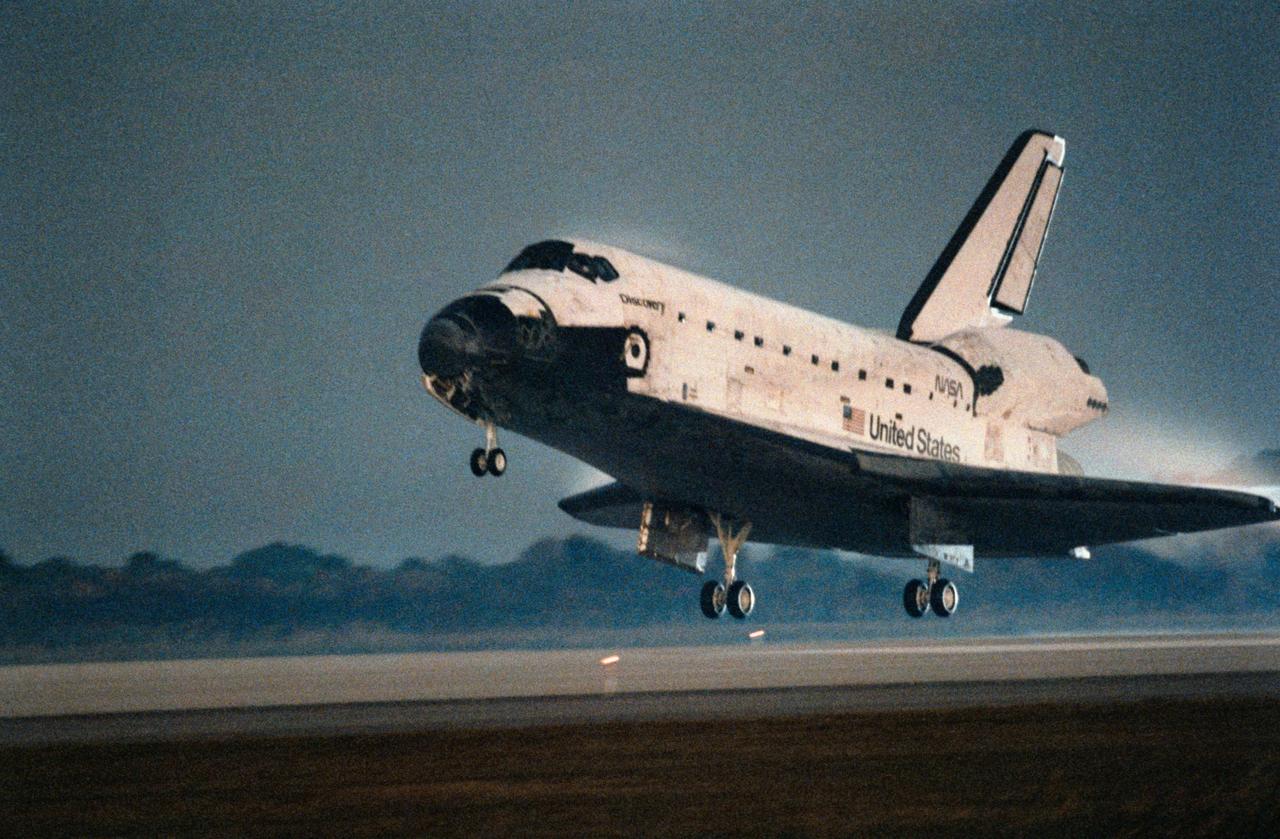STS-63 Fact Sheet
By Cliff Lethbridge

STS-63 — Discovery
67th Space Shuttle Mission
20th Flight of Discovery
Crew:
James D. Wetherbee, Commander
Eileen M. Collins, Pilot
Bernard A. Harris, Jr., Payload Commander
C. Michael Foale, Mission Specialist
Janice Voss, Mission Specialist
Vladimir G. Titov, Mission Specialist
Orbiter Preparations:
Tow to Orbiter Processing Facility – September 28, 1994
Rollover to Vehicle Assembly Building – January 5, 1995
Rollout to Launch Pad 39B – January 10, 1995
Launch:
February 3, 1995 – 12:22:04 a.m. EST. Scheduled February 2, 1995 launch was postponed on the day before due to the failure of one of Discovery’s on-board Inertial Measurement Units (IMU). Faulty IMU was replaced prior to launch. February 3 launch occurred as scheduled with no delays.
Landing:
February 11, 1995 – 6:50:19 a.m. EST at Runway 15, Kennedy Space Center. Rollout distance was 11,008 feet. Rollout time was 1 minute, 20 seconds. Mission duration was 8 days, 6 hours, 28 minutes, 15 seconds. Landing occurred during the 130th orbit.
Mission Summary:
This was the first Shuttle flight with a female pilot and the second flight carrying a Russian cosmonaut. One of Discovery’s primary objectives was a rendezvous with the Russian Mir Space Station, in a dress rehearsal for an upcoming docking mission.
The rendezvous effort was initially complicated by leaks in three of 44 Reaction Control System thrusters used to maneuver the Shuttle while in orbit. Concerns were raised that the leaking thrusters could damage Mir upon Discovery’s close approach.
However, after extensive analysis and some modifications in the planned use of the thrusters, approval for a close approach was granted. After stationkeeping at a distance of 400 feet from Mir and with Commander Wetherbee manually controlling the Shuttle, Discovery was maneuvered to a distance of 37 feet from Mir.
Discovery was backed away to 400 feet for a one and one-quarter loop around Mir as the space station was extensively photographed. The Mir crew observed neither vibrations nor ill effects to the spacecraft’s solar arrays during Discovery’s approach, which paved the way for approval of planned docking missions.
The mission’s primary payload was the Spacelab-3 pressurized module, which carried 20 experiments in biotechnology, materials development and technology demonstrations.
An experimental robotic device named Charlotte was flown for the first time to aid astronauts in performing routine manual tasks such as replacing experiment samples.
Other payloads included Astroculture plant growth experiments and Orbital Debris Radar Calibration System-II (ODERACS-II), which released six targets of less than 4 inches in diameter for calibration of ground tracking systems.
Also flown was SPARTAN-204, a deployable/retrievable satellite which observed celestial targets, orbiter glow phenomenon and Shuttle thruster firings.
On February 9, 1995 astronauts Foale and Harris completed a 4 hour, 39 minute spacewalk to test space station assembly techniques, space suit modifications designed to keep astronauts warmer and the handling of large objects utilizing the SPARTAN-204 as a handling target. This was the sole spacewalk of the mission.
SPARTAN-204 handling was curtailed as the astronauts reported extreme cold in their hands during night portions of the spacewalk. Astronaut Harris became the first African-American to walk in space.
Other on-board experiments included the Cryo System Experiment (CSE), Shuttle Glow-2 (GLO-2), IMAX camera, Solid Surface Combustion Experiment (SSCE) and Air Force Maui Optical Site (AMOS) calibration tests.
SELECTED NASA PHOTOS FROM STS-63
